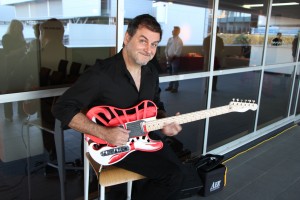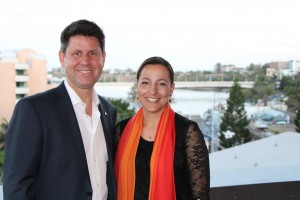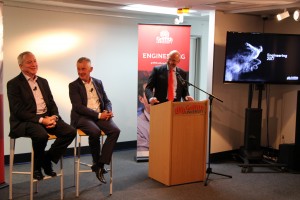Griffith University has launched a new cutting-edgeengineering program in an environment that is being hailed as one of the best learning spaces of its kind in the country.
A new $60 million building at Griffith’s Nathan campus will provide a state-of-the-art“experiential learning” space for engineering students and an added civil engineering program.
 Launched in Brisbane last night, the civil engineering program will give graduates the competitive advantage they need to succeed on the world stage.
Launched in Brisbane last night, the civil engineering program will give graduates the competitive advantage they need to succeed on the world stage.
Industry demand for highly skilled graduates in southeast Queensland has prompted the civil engineering program at Nathan, which has its first intake in 2017.
Head ofSchool of EngineeringProfessorGeoff Tansleysaid the new teaching space would be the best experiential learning space for engineering in the country.
“There’s some serious investment in engineering and Griffith sciences and I have not seen anywhere better,” he said.
“It’s learning by doing and it’s going to be phenomenal.
“Certainly industry wants graduates to be able to hit the ground running and what I’m keen to do is make sure our graduates have seen and used the systems that engineers are using. They’ll have the practical skills they need when they graduate.”

Dr Cheryl Desha, who will head the new program at Nathan, said the plan was to produce civil engineers with 21st Century knowledge and skills ready to take on the world.
“Think spatial information technology — meets smart buildings and infrastructure — meets biophilic urbanism(or nature loving cities) and energy efficiency,” she said.
“This program is unlike anything seen internationally to date.
“It will also be closely aligned with an initiative to implement architectural engineering and will give our graduates a cutting-edge point of difference that will give them a competitive advantage to work anywhere in the world.
With Australia producing 6000 engineering graduates a year and other countries upskilling their graduates to compete for jobs, Dr Desha said now was an important time to ensure students were set up with the skills they needed to take on the world.

Tristram Carfrae, deputy chairman of Arup — a global engineering consultancy firm — was guest speaker at the launch. He said over the past few years there had been a lack of connection between industry and academia.
“I am delighted that the Griffith University engineering program is getting a greater input from members of industry, including my colleagues from Arup, and also that they are considering offering an engineering course with an architectural major,” he said.
“It is also important that engineers understand more about architecture, and architects understand more about engineering. The big problems of this century will be solved by people who can think holistically in addressing all sides of the problems that we face.”
A new double degree of a Bachelor Engineering with Honours/Bachelor of Environmental Science will also be offered next year.
 From 2018 there will be new majors including Civil and Architectural, as well as a redesigned Bachelor ofEngineering Technology in Electronic, and Computer Engineering that will prepare students foremployment as engineering technologists in the electronics discipline.
From 2018 there will be new majors including Civil and Architectural, as well as a redesigned Bachelor ofEngineering Technology in Electronic, and Computer Engineering that will prepare students foremployment as engineering technologists in the electronics discipline.
There will also be a suite of new double degrees available in 2018.
